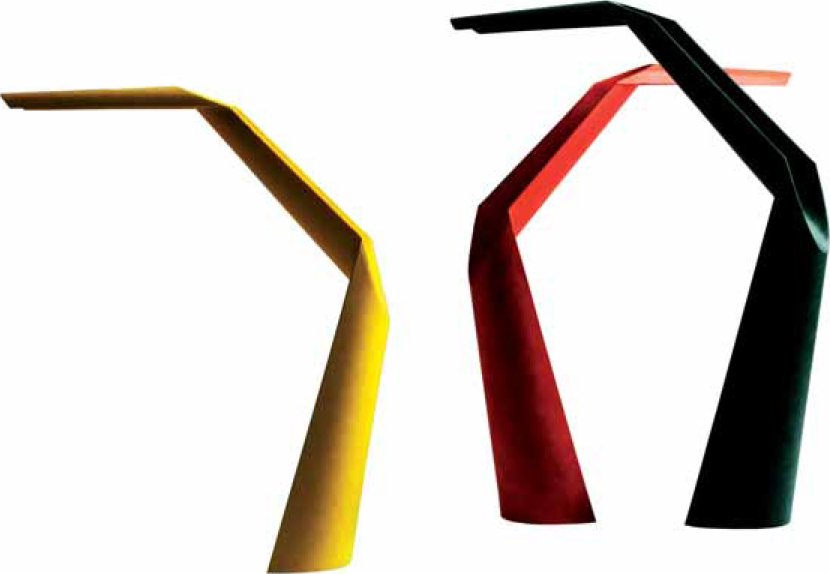Cellulose is one of nature’s ingredients that we have fully exploited, managing to identify, extract and apply it to many diverse uses. Unlike many of the materials featured in this book, it’s not possible to provide a quick snapshot of the typical applications of cellulose; its uses are far too many, ranging from Korean craft papers to Shigeru Ban’s architecture.
One of the main structural constituents of plant cellulose has been used as an ingredient to make plastics for ping-pong balls, plastic sunglasses, screwdriver handles, early film stock, fibres and textiles and, of course, paper in its many forms. Its use in all these areas is partly due to the fact that it reacts easily with other chemicals such as acetic and nitric acids, which when dissolved form acetates, such as cellulose acetate and nitrates such as cellulose nitrate.
One of my favourite stories about paper (one of the main products derived from cellulose) comes from Sri Lanka, where it is used as the basis for Elephant Poo Paper. This particular story encapsulates so much about the uses and fabrication of cellulose, which is based on regional ingredients, resources and culture. The interesting thing about the use of elephant dung to make paper is the fact that the animal’s digestive system breaks down the fibres and softens them to provide the first stage of the paper making process. The high-tech LED light shown here is made from sandwiched paper sheets of DuraPulp.
Image: Lights by Claesson Koivisto Rune and Södra

Key features (Södra paper pulp)
•High stiffness – an alternative to plywood
•Economical material usage
•Card-making process is still to be fully commercialized
•No toxic chemicals
•Compelling consumer story
Sources
Cellulose is widely available.
Cost
Relatively inexpensive.
Sustainability issues
To make plastic from cellulose an alkaline solution of cellulose fibres – usually wood or cotton – known as viscose is extruded through a narrow slit into an acid bath. The acid regenerates the cellulose forming a film. Further treatment, such as washing and bleaching, yields cellophane. There are several ways of dealing with the shredded wood to obtain the pulp for paper making. One method is to bake it for several hours, at temperatures of 130-180°C (266-356°F, along with a chemical agent. In most cases, it is the use of the chemical treatments that is cause for environmental concern. Paper has one of the largest recycling streams of any material, however much of the recycled paper from Europe is sent on a boat halfway around the world to China. In addition, this brownish paper needs bleaching to reach a high whiteness, which is achieved by using magnesium oxide in addition to hydrogen peroxide and chlorine. The manufacture of virgin and recycled paper also uses large quantities of water.
Production
Where cellulose fibres are formed into a card-like material, the process is based on various methods, one of which involves press-forming together layers of paper that have been impregnated with PLA (polylactic acid), a biodegradable material made from maize starch or sugar cane. Heat and pressure combine to melt the PLA and bind all the layers of paper together to produce remarkably strong parts. The expected lifespan of the material is 3-4 years in heavy use, then biodegradable after that.
Paper, compressed pulp, and for making circuit boards for use in the electronics industry. Paper is one of those materials that can be formed using an infinite number of possibilities. Apart from paper, textiles, including cotton and various forms of plastics, cellulose is also used as filler for plastics requiring a fine finish, for various uses in food, and as a thickener for latex paints, inks and cosmetics. It is also the basis for celluloid ping-pong balls, which are a mixture of nitrocellulose and camphor. PLA is safe for food products.
Derivatives
Cellulose such as Tencel® and Rayon® cellophane was originally developed by DuPont at the beginning of the twentieth century, but is now an Innovia Films brand. It is also the main subject in the Biocouture project featured in this book (see page 60).
| + | – |
|
–Huge variety of uses –Widely available |
–Can be energy-intensive and use harmful chemicals in the production process (although companies such as Södra use no toxic chemicals) |
